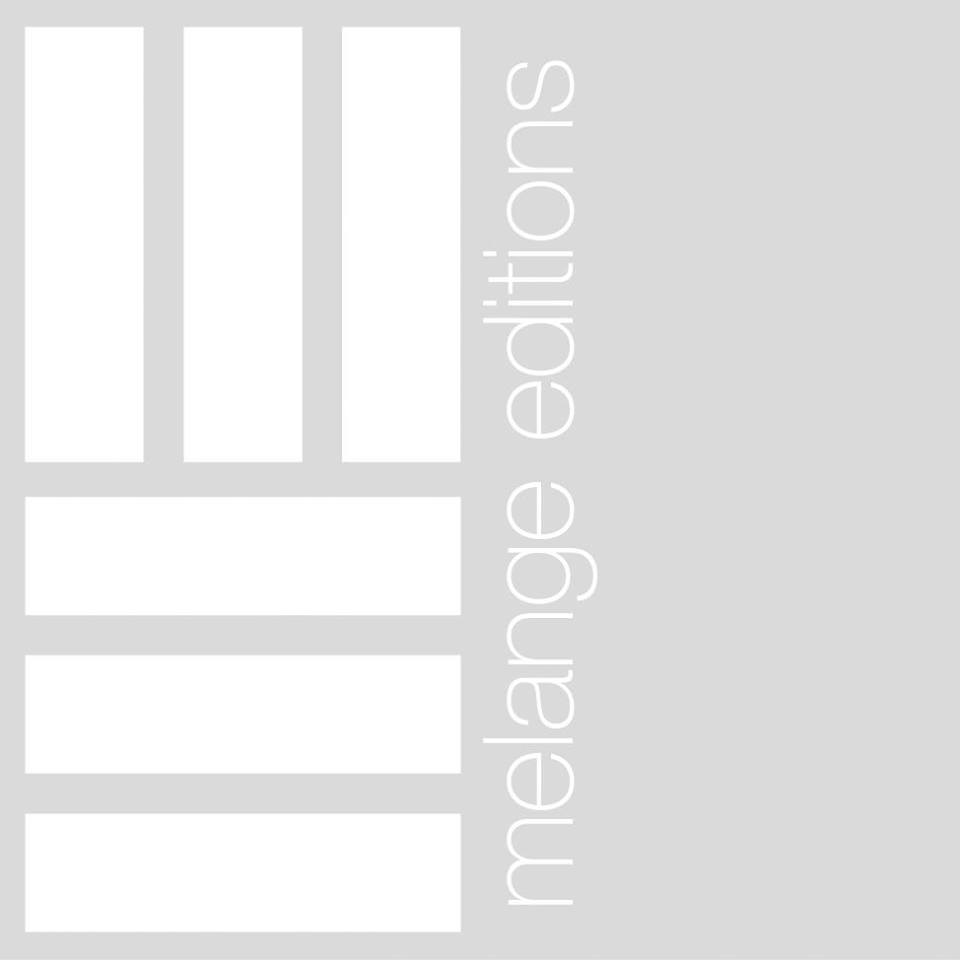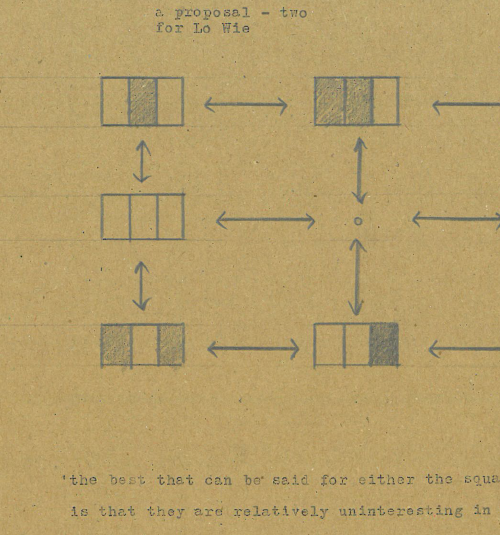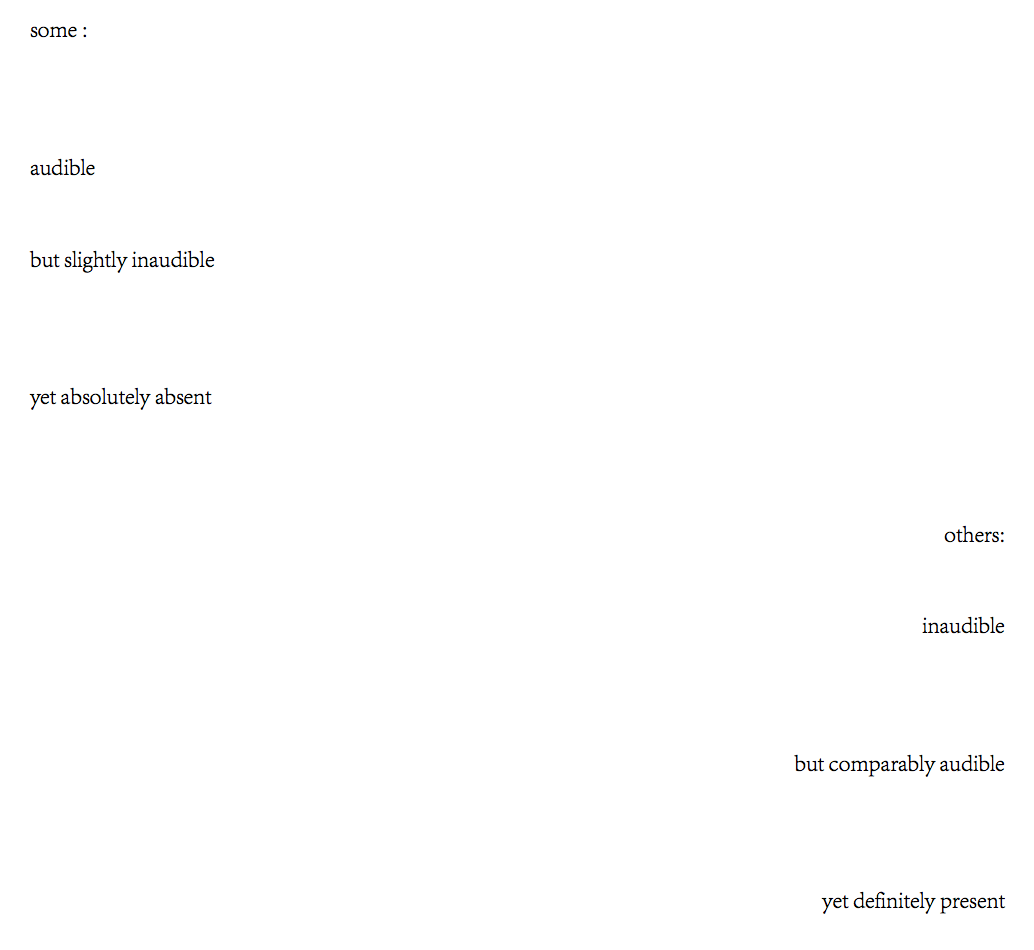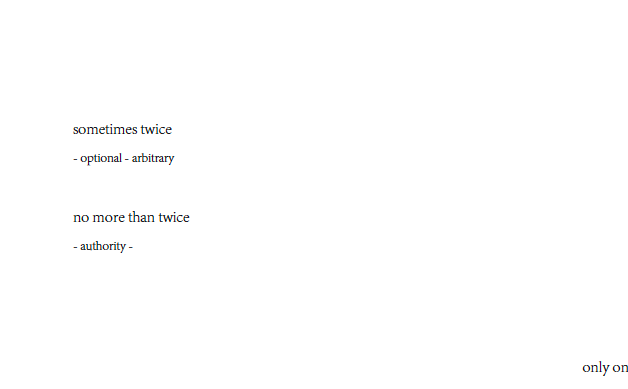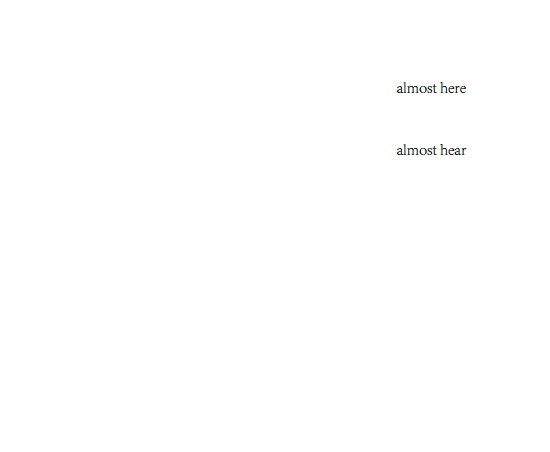Here is the third interview for the Controlled Indeterminacy in Text Scores project, introduced here. Ryoko Akama is a performer, composer, and sound artist currently based in the UK. She is co-editor of Reductive Journal and runs the melange edition label. Her work invites an introspection that feels very fresh to me. As I’ve started to look at it more closely, I’ve become more and more curious about the thinking or attitude behind the work. Keep reading…
I’m so interested in the way you chose to present the score of acorn. I could imagine a performance version of the score that has most of the instructions on one or two pages. Can you talk about what would be lost if it were presented in a more direct way? (I know a lot would be lost! I just am curious to hear how you might say it.)
– in terms of the performers’ engagement with the piece
– in terms of their understanding of your intentions
– in terms of the sound world that it suggests
– in any other way you might think of
You are absolutely right in saying that re-typing and squeezing all texts into a page or two will result in a different score, or at least it would not propose what I want to propose. Empty space is something that proposes. We don’t ask Malevich’s black square painting series or Bob Law’s castle series; ‘well, let’s collage these empty areas into one piece and exhibit that’. Space is idea, aesthetic and revelation of many things. In performance, it can mean silence, continuity, eternity, contemplation, contrast etc. The employment of space is a specificity that can not be ignored in its performance situation – a transformation of visual absence into temporal experience.
My score changes its appearance depending on how I assemble ideas and structures. I am currently working on a series called ‘a proposal’ (which I have made four so far and am in the process of making the fifth). ‘a proposal’ series do not carry out a visual sense of emptiness as much as acorn but the exploration of space/silence is still examined in relation to numbers, texts, visual sketches etc. How each performer perceives and receives my ‘proposal’ and replies to it is like a personal letter exchange. For me, when a score is created, a part of my work is done. The next part is that a performer perceives it – a performer’s engagement begins here when (s)he visually and perceptually deals with the piece. And then, an event takes place that actualises a situation, composes a space or juxtaposes different approaches into one structural experience on the base of the score. Throughout, the property of absence is as crucial as the property of object.
I do not think that having areas of absence is an ‘indirect’ approach. It is the idea, form, reflection and the engagement with ‘the moment’. On the other hand, informative instructions and writings could be quite indirect and poetic. Employing limited amounts of objects/materials do not conclude as ambiguity. It can be the most concise and direct way of communication. When you look at scores by Manfred Werder, Taku Sugimoto or Sam Sfirri, my statement comes alive and truly. acorn quotes a Haiku by Ayako Hosomi. I have been fascinated by the system of Haiku recently and started integrating it in my practice. A constraint of 5-7-5 must be applied to a Haiku poem as well as an implementation of at least one seasonal word within the piece. Haiku form is the simplest and most absent description of seasonal life that fully comprises a composer’s intention. I like how text and space sculpt aural experiences altogether and I feed myself with many influences by visual art, literature, music and film.
There should be diverse (or subverted) approaches and possibilities to acorn performance. Once Joseph Kudirka said to me that the absence (of information) creates performer’s responsibility, not freedom. For me, this is where ‘listening’ becomes important. I ‘share’ ideas and ‘provoke’ listening situations in performance where performers reflect themselves upon my intention seeded within space. Space is so transparent and reflective. Once you recognize it, it is always there to examine through. Here, music becomes such a brilliant application as these examinations are expanded into the omni-dimensional structure, where one can be within, around or out of that sculptural field. Space in my scores may suggest silence but also happening. I am looking forward to hear how a.pe.ri.od.ic will read my space and text in the coming week.
There are a lot of “how many” indications in the score, as well as only’s (“only once” – “just once” – “sometimes twice” – “no more than three” – “only once in fifteen sections”), and a sense of really caring about each sound, especially that last one I quoted. For you, does the act of counting these actions, and especially of having few of them, make them more valuable? Or maybe there’s a better word than valuable. I’m also thinking of the title of your journal, Reductive Journal.
The title of the journal was decided by the co-editor Daniel (del Rio) so I have nothing to say about that. It is controversial to use ‘reductive’ in many ways and I am not good at arguing these things.
Here I make ritual indents in time that demonstrates one’s perception of time. I like a personality of individual pace or rhythm pattern that identifies a current self. I use ‘you’ a lot in recent scores in order to work upon a relationship. As an ensemble, each performer relates a personal scope of temporality to that of the others. Communication/relationship determines almost everything in the world. How things are related spontaneously and relevantly, in time and space, remains as a central tenet in my compositional activities. All matters are responsive and corresponding, but they maintain individuality too. In my works, I tend to deal with each element (performer/object etc) on its own, which as a result, crafts the wholeness.
Listening is very important in my creative practice. Where something is not performed is as important as, sometimes more important than, where it is performed. I like the contrast, transformation, uniformity or existence of ‘there is’ and ‘there is not’. It is beautiful to hear an occurrence of performing ‘just once’ when this ‘just once’ happens unintentionally but very intended… like a quiet experience in Turrell’s Skyspace.
There are also a lot of indefinite words and phrases, like maybe, could be, almost, approximately, slightly, optional, “does not have to be definitely” – and also the questions, like “do we hear it?” and “while performing?” and “what does ‘quite’ mean in your culture?” Would it be right take these all together (as well as separately) as a kind of performance instruction to ask rather than tell, to be unsure, to work at thresholds instead of in more definite spaces?
Yes, very true. Can we be sure to be unsure? Can we perform unintentionally with intention?
This comes from my interest in culture that maintains different nuances and idiosyncrasies. In Japanese culture, we tend not to give straight answers but ‘beat around the bush’, which is our cultural ways to answer or respond, so there is a strong connection between indirect references and actual answers. I used these cultural nuances as notations in acorn. These phrases such as maybe, almost, slightly etc. may appear inconclusive and cryptic, but at the same time, they do mean what they mean.
Take an example from acorn – ‘audible / but slightly inaudible / yet absolutely absent’. – This is not indirect at all but a simple indication, quite defining of my intention. On the other hand – sometimes twice – optional – arbitrary / no more than twice – authority – This implies two facets of communications; determinacy and indeterminacy. I think acorn is quite a straightforward piece to perform. I throw a ball that contains my thoughts, concepts and ideas. How one catches it and returns a ball is entirely independent but I would like to receive a ball back somehow, maybe, definitely, perhaps…
These sentences with ? are brutal because it is both ‘me’ and ‘you’ asking questions. acorn is commissioned by a.pe.ri.od.ic and we do not know each other well. Therefore, I wanted to become a little expository, friendly, psychological, poetic, imaginary etc. with them through the text. My scores always play with language. In acorn, you can see CAUSE/beCAUSE, here/hear and so on. In other works, I produce different word-plays. I love language because I see myself as a no-lingual speaker. I speak ok English and ok Japanese. No Korean though my dad is a Korean. I have struggled and suffered from language and will forever, and this is why I play with it. For me, language is visual, literal, aural and contextual simultaneously. It is material, object, form and content. Some rules and constraints make my creativity blossom when I compose. Whether I’m doing a spatial or temporal composition, what I do does not change too much.

